There are nearly 100 Klms of tunnels in the cliffs near The 3 Sisters at
Katoomba, Coal mining began in that area in 1878 There were about 40 mines at various times.
John Britty North was a man on the
lookout for opportunities and having a mining background he purchased 640 acres from Captain Robert Henry Reynolds and eventually additional land as a mining conditional purchase.
In 1878 he initiated exploratory adits in the coal seam below Orphan Rock in the Jamison Valley, utilising a natural tunnel in the edge of the escarpment, he enlarged it to provide a route for a steam driven dual incline haulage to provide access to the coal seam 219m below the
cliff top.
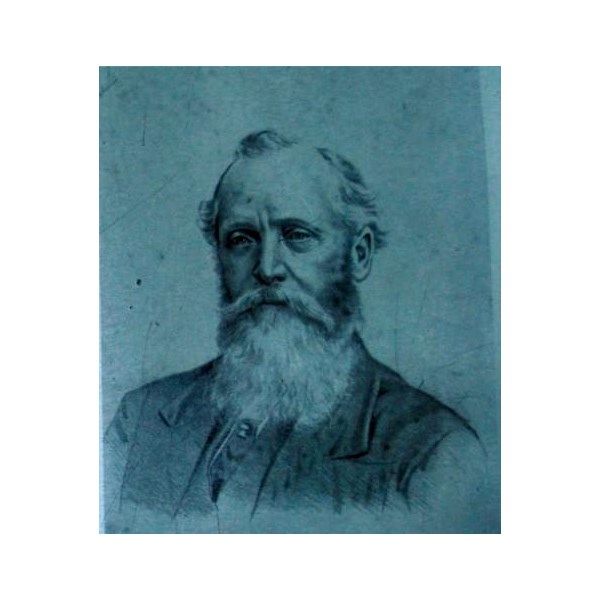
John Britty North
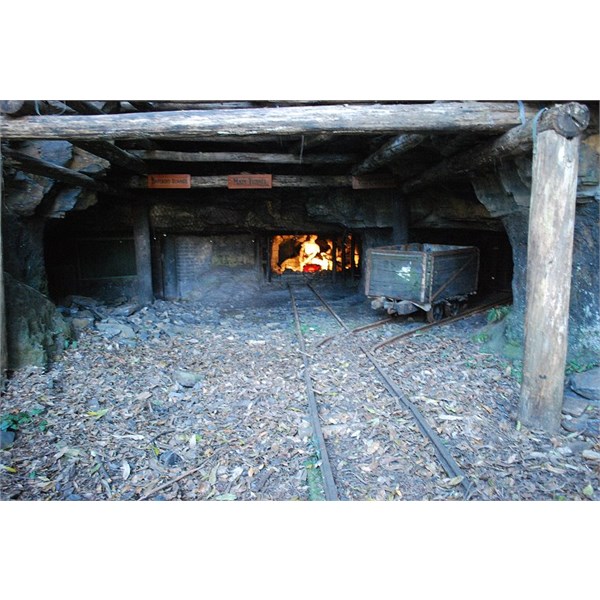
Mine Tunnels on display
One of his ventures was to extract an approximately 200Kg block of coal, have it man handled up the 200m high escarpment and then displayed at the 1879 International Exhibition in
Sydney. Based on the sample it is believed he was awarded a Government contract to supply coal to the NSW Railways.
It took some years to raise the necessary capital and install the equipment needed, but by 1883 the
mine was in full production.
A double incline had been constructed up from the base of a small self acting incline which brought the coal down about 40m from the mouth of the adit to the base of the main incline. At the top of the main incline a dual tramway was constructed covering the 3 Klms to a
railway siding on the main Western Line
and then transported to
Sydney. By 1888 there were 23 men employed underground and 60 men on the surface, the total output for the 6 months June to December 1888 was 65,680 tons of coal.
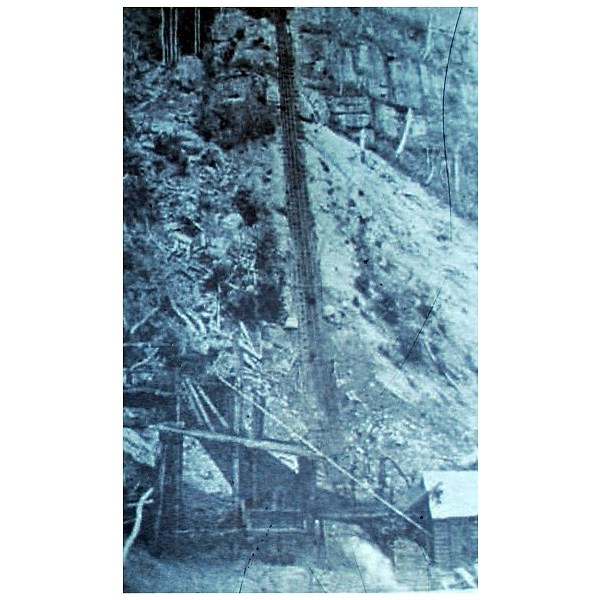
Coal from mine to Railway

Norman Selfe, civil engineer 1900
The incline Railway was designed by
Sydney civil engineer Norman Selfe it was initially built with twin tracks and was completed in 1882. It passes through a natural tunnel in a slot in the
cliff face between Orphan Rock and the present site of the tourist center, a substantial amount of rock blasting was necessary to provide a uniform grade of average 44 degrees from the
cliff top 200m down to the valley some 30m below the outcrop of the
Katoomba seam.
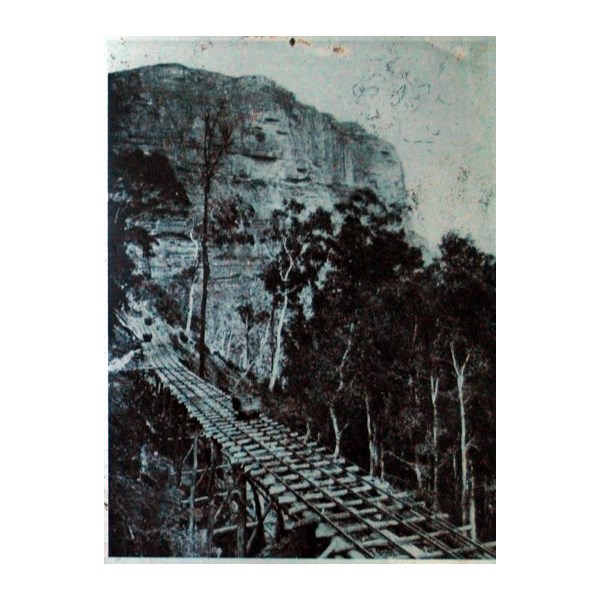
The Dual Tramway
This section of the tramway above was photographed in 1892, at that stage 154 men worked at the various mines in the area and the extracted 22,000 tons of shale during that year.
The
cliff in the background is now the famous
Katoomba Landslide, this particular section of the tramway ran between the Mount Rennie tunnel through Narrow Neck and the Daylight Tunnel through the
Katoomba coal
mine, the skips visible in the photo carried oil shale from the Glen Shale
mine in the Megalong Valley to the base of the incline, which is now the Scenic Railway.
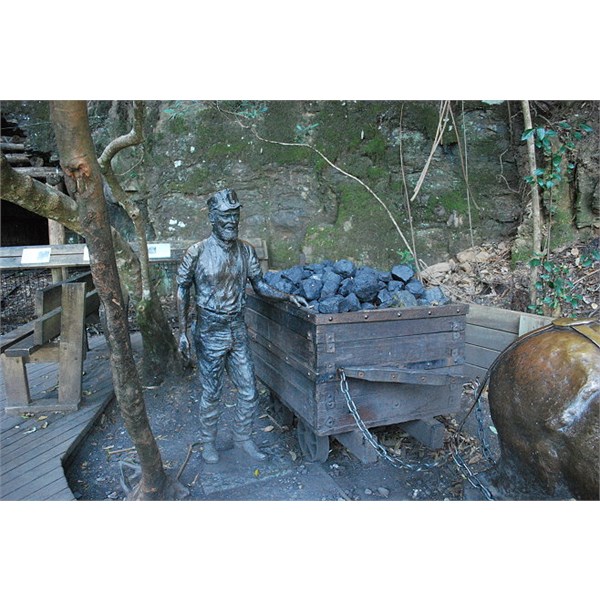
One of the Coal Skips on display
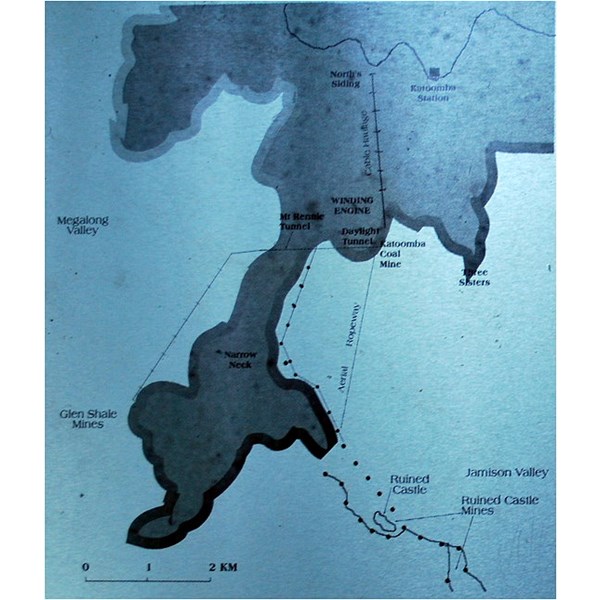
Katoomba Mines Sketch Map
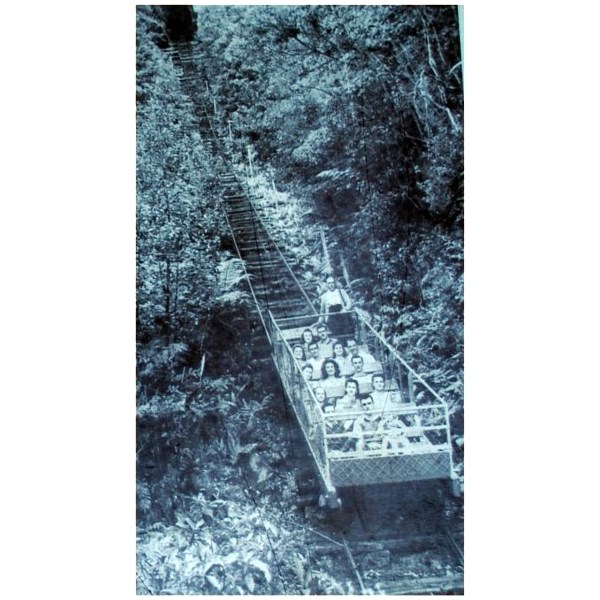
Katoomba Tourist Incline Railway
The last
mine closed in the late 1930's , today the incline railway transports tourists.